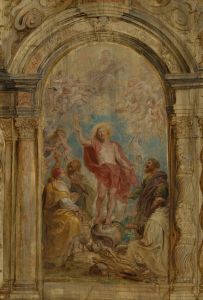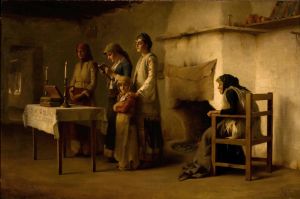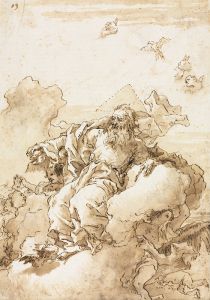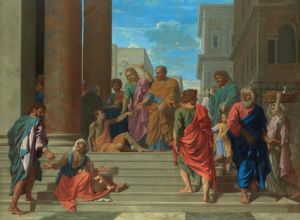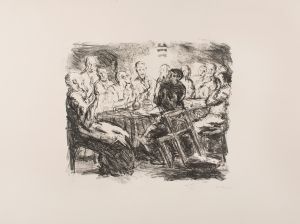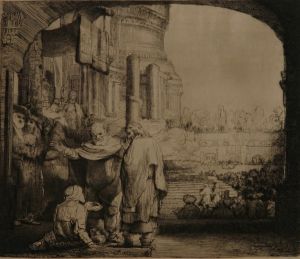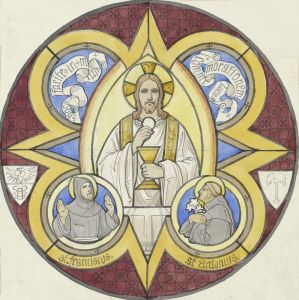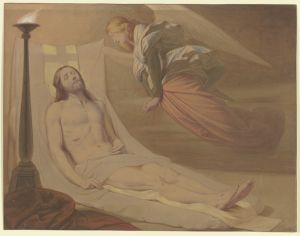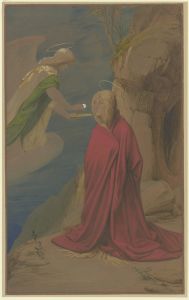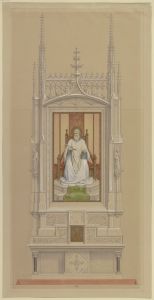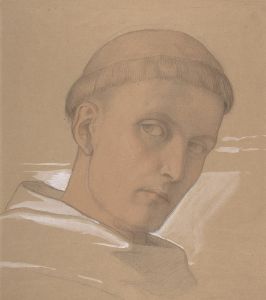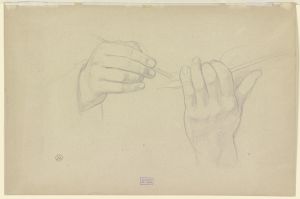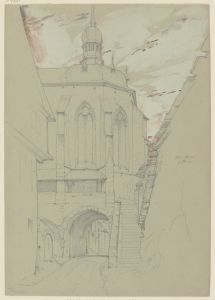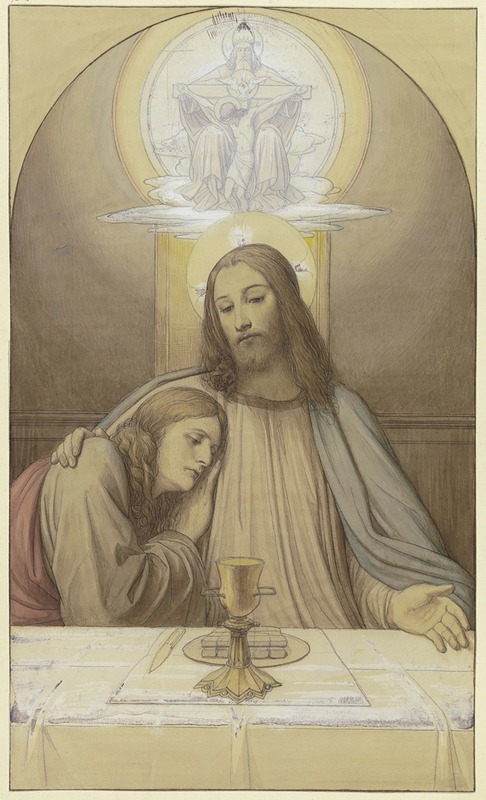
Christ with his favorite disciple John, half-length figures at the table of the Last Supper, above them the Trinity
A hand-painted replica of Eduard von Steinle’s masterpiece Christ with his favorite disciple John, half-length figures at the table of the Last Supper, above them the Trinity, meticulously crafted by professional artists to capture the true essence of the original. Each piece is created with museum-quality canvas and rare mineral pigments, carefully painted by experienced artists with delicate brushstrokes and rich, layered colors to perfectly recreate the texture of the original artwork. Unlike machine-printed reproductions, this hand-painted version brings the painting to life, infused with the artist’s emotions and skill in every stroke. Whether for personal collection or home decoration, it instantly elevates the artistic atmosphere of any space.
Eduard von Steinle's painting Christ with His Favorite Disciple John, Half-Length Figures at the Table of the Last Supper, Above Them the Trinity is a work by the 19th-century German painter known for his contributions to the Nazarene movement. Steinle, born in Vienna in 1810 and active primarily in Germany, was renowned for his religious and historical artworks, often characterized by their spiritual depth and adherence to Christian iconography.
This particular painting depicts a moment from the Last Supper, a significant event in Christian theology. The composition focuses on Christ and the Apostle John, often referred to as the "beloved disciple" in Christian tradition. The figures are shown in a half-length format, seated at the table. Christ is portrayed with a serene and compassionate expression, while John leans towards Him in a gesture of closeness and devotion. The intimate interaction between the two figures reflects the deep bond described in the Gospel accounts.
Above the central scene, Steinle includes a depiction of the Holy Trinity, a core doctrine in Christianity representing the Father, the Son, and the Holy Spirit. This addition emphasizes the divine nature of Christ and situates the Last Supper within the broader theological framework of salvation and divine unity.
Steinle's style in this work aligns with the ideals of the Nazarene movement, which sought to revive the spiritual and artistic values of the Renaissance and early Christian art. The painting likely reflects the influence of medieval and Renaissance religious imagery, with its focus on symbolic representation and emotional resonance.
The exact date of the painting's creation is not widely documented, but it is consistent with Steinle's broader body of work, which often explored themes of Christian faith and biblical narratives. The painting is an example of Steinle's ability to convey theological concepts through detailed and expressive visual storytelling.
Further details about the painting's current location, provenance, or commission history are not readily available in existing records.





